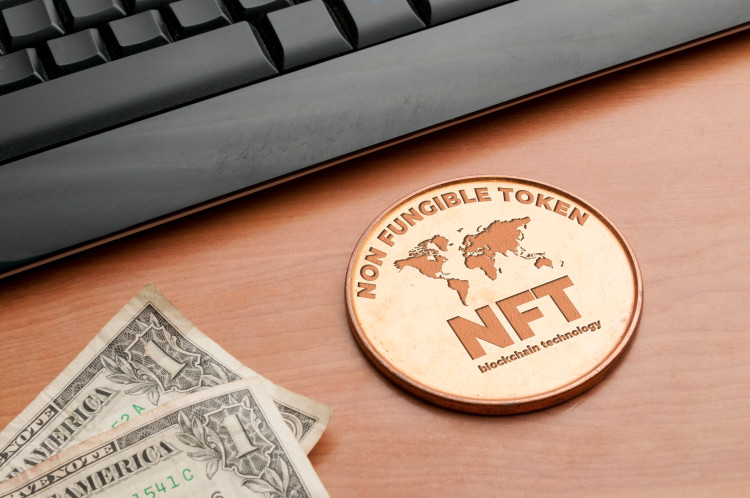Non-Fungible Tokens (NFTs)

Introduction
Non-Fungible Tokens (NFTs) are a new kind of digital asset that can represent ownership of unique assets like artwork, virtual collectibles and real-world property. They can be used as a way to digitize real objects for use on the blockchain. NFTs also have some similarities with cryptocurrencies in that they use cryptography to provide transaction verifiability and proof of possession, but unlike cryptocurrencies which are all fungible because they’re worth the same amount (1 BTC), NFTs have varying values depending on characteristics like age or quality.
NFTs are unique tokens or certificates.
- Non-Fungible Tokens (NFTs) are unique tokens or certificates that cannot be easily exchanged or replaced with one another.
- NFTs have different values: they are not fungible.
- They can represent unique items in physical reality such as real estate, sports cars or diamonds.
- NFTs are mostly associated with gaming and art.
- They can also represent unique items in physical reality such as real estate, sports cars or diamonds.
Some people think it is a fad that will go away, but others hope it could become an important part of the internet infrastructure.
NFTs are still in their infancy, but they have the potential to change how we do business on the internet. Because NFTs use blockchain technology, they cannot be forged or copied. They are unique, just like a real-world asset such as a painting or a diamond. Their uniqueness is one of the main reasons why NFTs have become so popular in recent years.
Digital assets are certified by NFTs using blockchain technology.
NFTs are unique tokens or certificates that have intrinsic value, unlike cryptocurrencies. NFTs are non-fungible, meaning they aren’t interchangeable with other NFTs of the same type. These digital assets use blockchain technology to certify ownership of digital assets and prove authenticity.
NFTs are much more expensive than regular cryptocurrency because they are scarce, unique and have varying degrees of rarity. The value of an NFT depends on its quality, provenance and other factors like scarcity in supply (which is why some items sell for thousands). In contrast to traditional collectibles such as fine art and antique furniture – where there may be many similar items in circulation – each tokenized asset has been uniquely created through the blockchain network itself or by a central issuer.
Crypto Collectibles Are A New Type Of Asset Class! You Get To Own Something That Is Unique And Rarely Fails With Time Like A Traditional Art Piece Or Rare Coin Collection Would From Just Sitting Around And Being Collected By Someone Else All Day Long Without Your Knowing It… Imagine That Proof Of Ownership Could Be Given At Any Point In Time Without Having To Show Off Your Collection Face-To-Face To Anyone Else Who Moved Their Pieces Around Every Single Day During Their Lifetime Only To Find Out After They Died That All Those Pieces Were Worthless Because No One Wanted Anything More Than What They Had Left Behind When They Were Gone Forever…
NFTs are much more expensive than regular cryptocurrency.
NFTs are much more expensive than regular cryptocurrency. NFTs are much more expensive than most other assets, including gold and most stocks. NFTs are much more expensive than real estate in many parts of the world, but especially in areas where housing costs have risen dramatically over time, such as San Francisco and New York City.
NFTs are also more expensive than previous blockchain technologies such as Bitcoin (BTC) or Ethereum (ETH), which have both suffered from their volatility issues since they first appeared on the scene several years ago.
One thing that makes NFTs so valuable is the limited supply: unlike traditional cryptocurrencies like BTC or ETH that can be generated at will by mining operations across the globe, non fungible tokens are created through a fixed process wherein only one token exists per person or entity (i.e., there will never be two “blue kittens” owned by different people). If someone were to create two blue kittens on one instance of CryptoKitties®, their value would go down considerably because their rarity would be compromised—thus reducing demand for those tokens among collectors who want something truly unique.
Non-Fungible Tokens are a new type of asset that could change how we do business on the internet.
Non-Fungible Tokens (NFTs) are a new type of asset that could change how we do business on the internet. An NFT is a digital asset with unique qualities, such as a specific number or code that can be used to verify its authenticity. In the same way, you can prove ownership of your car by showing your registration number or state license plate, you can prove ownership of an NFT by showing its blockchain record and transaction history.
NFTs are being used in gaming and art, but could easily be applied in other verticals like real estate and even government identification cards. Because they use the blockchain for ownership verification, they’re different from cryptocurrencies like Bitcoin or Ethereum which use tokens on their chains instead of using blockchain technology at all (although there’s some overlap between these two types).
Simply put, a Non-Fungible Token (NFT) is a unique digital asset, completely virtual yet still very tangible.
Simply put, a Non-Fungible Token (NFT) is a unique digital asset, completely virtual yet still very tangible. They are non-fungible tokens or certificates that can be used for a variety of applications like voting rights and collecting sports memorabilia. NFTs are also much more expensive than regular cryptocurrencies because they use blockchain technology to certify ownership of digital assets.
Cryptocurrencies were created to disrupt the financial industry by decentralizing currency exchanges through blockchain technology. However, there’s more than one way to store value digitally: people can buy stocks in companies or even use cryptocurrencies as investment vehicles if they want to diversify their portfolios on larger scales. In contrast with cryptocurrencies which have no intrinsic value attached to them besides what others may assign at any given time; NFTs have intrinsic value since they represent real-world assets such as objects or land titles that can be traded on exchanges just like stocks are traded all over the world every day!
Some NFTs are generated by the blockchain network itself and cannot be owned by anyone, such as the cryptocurrency Ether (ETH).
- Ether is a cryptocurrency that is generated by the Ethereum blockchain.
- Ether is used to pay for computation and storage on the Ethereum network.
- Ether is used as a reward for mining new blocks in the Ethereum blockchain.
- Ether is used as a payment method for smart contracts on the Ethereum blockchain. Most NFTs are not generated by miners, so they cannot be paid for with ETH or any other cryptocurrency that’s mined within the ERC-721 standard (such as ERC-20). For example, CryptoKitties are not mined; they’re created when someone buys an off-chain digital cat from another user using ETH or some other cryptocurrency that can be transferred between users via smart contracts; therefore, CryptoKitties cannot be bought using ETH—they only exist on a private ledger made available by third parties like Cryptokitty Labs Inc., which owns all of them at once (with no single person owning more than 1% of all CryptoKitties).
However, most NFTs are generated as items of value in games that utilize blockchain technology, or they represent pieces of art, digital collectibles, or other non-fungible assets that can prove ownership via the blockchain.
NFTs have some similar properties to cryptocurrencies, but they also have some key differences. Cryptocurrencies such as Bitcoin are all fungible because they are all worth the same amount; each unit of a cryptocurrency is interchangeable with any other unit and can be exchanged for goods or services at a given rate. NFTs, on the other hand, are mostly associated with gaming and art nowadays; their content or collectability differs from token to token and therefore each NFT has a different value depending on its content or collectability (e.g., Alice could own an extremely rare version of Bob’s painting).
The blockchain is useful for NFTs because it is a decentralized database with a secure and transparent method of verifying transactions—and thus securing ownership rights over digital assets like images or videos. However, most NFTs are generated as items of value in games that utilize blockchain technology (eSports), or they represent pieces of art, digital collectibles, or other non-fungible assets that can prove ownership via the blockchain (artworks). They’re used by gamers who want to share their digital achievements online—for example, someone might create an avatar that represents them within their favourite game world so others can see what kind of character they’ve created!
Non Fungible Tokens have some similar properties to cryptocurrencies.
Non Fungible Tokens have some similar properties to cryptocurrencies. Like cryptocurrencies, NFTs are not fungible—they are unique, non-interchangeable, and use blockchain technology. Each NFT represents something else: a digital collectable (think Pokemon cards), a trading card from an online game like Magic The Gathering or Hearthstone, or it can be used as money by representing real-world things such as gold coins or houses.
To understand how NFTs work and why they’re valuable in today’s market we should familiarize ourselves with blockchain technology.
Cryptocurrencies are all fungible because they are all worth the same amount.
Fungibility is the property of a good or a commodity whose individual units can be substituted for one another. It means that one unit is as good as any other unit in the same set. Fungibility implies that an individual’s possessions cannot be rationally differentiated from the possessions of others, which makes it possible to trade them at will without affecting their relative values. For example, if two people own identical cars, they can exchange them easily without concern over whether one is worth more than another. This feature is also referred to as homogeneity.
Some examples of fungible goods include currencies, gold, silver and gasoline. Some examples of non-fungible goods include baseball cards, artworks and collectibles.
There are many other kinds of non-fungible tokens besides ones associated with gaming or art; some examples include unique digital assets (such as Ethereum), completely virtual yet still very tangible virtual items like CryptoKitties, non-fungible tokens representing unique items in physical reality such as real estate, sports cars or diamonds. Non-fungible tokens are tokens or certificates that are not interchangeable with each other (unlike cryptocurrencies), but have some similar properties: for example, both have prices determined by supply and demand on exchanges where they can be traded against each other via trades directly between buyers/sellers using smart contracts which allows transactions to happen instantly without waiting days for bank transfers etcetera needed when dealing with traditional currencies such as USD.”
For example, a dollar bill is fungible because it is worth the same amount as any other one-dollar bill.
- Fungible tokens are exchangeable for other fungible tokens of the same type. For example, a dollar bill is fungible because it is worth the same amount as any other one-dollar bill.
- Non-fungible tokens cannot be exchanged for other non-fungible tokens of the same type. If you own a collection of baseball cards and sell them at auction to someone else, they can’t be traded with each other because they’re all unique—even if their values are similar or identical.
- Semi-fungible tokens may be exchangeable for some but not all semi-fungibles of their kind. You might be able to trade your stock certificate representing 100 shares of Apple Inc., but not those from Google Inc., since both companies are publicly traded on Wall Street and have similar values but don’t necessarily track each other’s prices precisely over time due to factors like investor sentiment and how much cash each company has on hand at any given moment in time (which ultimately affects how much investors think their stocks will go up or down).
Gold coins on the other hand are non-fungible because each coin has a different value depending on its purity, karat weight and age.
Gold coins are a form of currency and as such, they are non-fungible. Each coin has a different value depending on its purity, karat weight and age. Cryptocurrencies like Bitcoin, Ethereum or Litecoin are fungible. All cryptocurrencies are worth the same amount because they can all be used as currency. The difference between assets like gold and cryptocurrencies is that while gold cannot be duplicated or divided into smaller parts (non-fungible), cryptocurrencies can be duplicated or divided into smaller parts (fungible).
Despite some common traits with cryptocurrencies, NFTs are mostly associated with gaming and art nowadays.
The modern NFTs can represent any unique item in physical reality: real estate, sports cars or diamonds. However, they are mostly associated with gaming and art nowadays. For example, if you buy a particular Non-Fungible Token (NFT) representing an art piece on the blockchain through a digital marketplace like OpenSea or RareBits then you own that particular token which cannot be replicated by anyone else. Just as cryptocurrencies are used to purchase different digital goods, so do NFTs allow ownership of digital items on the Ethereum blockchain.
They can also represent unique items in physical reality such as real estate, sports cars or diamonds.
NFTs can also represent unique items in physical reality such as real estate, sports cars or diamonds. This means that NFTs can be used to represent anything with a unique identifier.
What is an NFT?
A non-fungible token (NFT) is a unique digital asset that can be used to represent anything from a digital art piece to an item in a game. Unlike traditional cryptocurrencies, which are fungible and interchangeable, each NFT is considered unique and cannot be replaced by its copy.
In this article, we’ll cover what makes an NFT different from other cryptocurrencies like Bitcoin or Ethereum, how they’re used on the blockchain today, and how you can buy your own when they become available later this year.
How are NFTs used?
NFTs are used for a wide variety of uses. There are several different applications for them, including:
- Games and collectibles;
- Representing assets in video games;
- Real-world goods (for example, representing ownership of a piece of art);
- Virtual items in video games or other digital worlds;
- Digital representations of real-world physical goods (such as paintings or sculptures); and even more!
How is the blockchain useful for NFTs?
The blockchain is an immutable ledger and a decentralized system that allows for peer-to-peer transactions. In addition, it is a distributed network of computers that are connected through the internet. This means that the network is transparent, verifiable and secure. The blockchain uses cryptography (a form of security) to ensure that only authorized users can access information on the server. Blockchain also allows you to transfer assets on the network securely and sell digital assets on a marketplace without any issues or delays in delivery as well as track your assets on the network through tracking codes embedded into each asset’s unique ID number or via RFID tags attached directly onto physical products using NFC technology (near field communication).
Blockchain technology enables you to create a digital identity based on your public key address so that anyone who wants access needs permission first before viewing your details such as bank account numbers etcetera… In addition, blockchain allows users across borders to transfer value quickly and easily without having issues such as double spending meaning senders cannot spend coins twice by sending them again after receiving them once already! Finally, cryptocurrency uses this same technology behind its operations but adds another layer by allowing users, even more, control over their money than ever before possible before now thanks t breakthroughs made recently within cryptocurrency development circles here at home where I live in North America continent which spans from Canada all way down south past Mexico & South America all way up till Chile & Argentina then up again towards Panama City until finally reaching Cuba Island itself.”
Why are NFTs popular now?
Non-fungible tokens (NFTs) are a new technology for representing digital ownership. They’re a good way to represent unique assets, such as artworks or collectibles. NFTs have also become an essential part of the internet infrastructure, allowing you to buy and sell things online in a new way.
Are NFTs being over-hyped?
It is important to understand that the NFT market is still in its infancy, and many of the projects built on top of it have not yet reached full maturity.
Therefore, it is too early to say whether or not non-fungible tokens will live up to their promise as a new technology that can disrupt existing markets and create entirely new ones.
What are the risks of investing in NFTs?
If you’re thinking about investing in Non-Fungible Tokens (NFTs), there are many risks to consider. NFTs offer a lot of potential, but with that comes the possibility of losing money or your tokens if you are not careful. It is important to research and ensure that you understand how NFTs work before investing in them.
There could be security issues with storing your tokens on an exchange or other third-party website where they might get hacked. You also need to make sure that you’re following the law regarding investing in NFTs where you live, as there are some countries where it is not allowed at all!
If you want to make money selling digital art as non-fungible tokens (NFTs), then it’s important for artists who create good work but don’t have the resources for galleries or exhibitions yet would otherwise suffer from lack of exposure due
NFTs are a new technology for digital ownership.
NFTs are a new technology for digital ownership. Unlike traditional cryptocurrencies, NFTs are unique tokens or certificates that can be owned by one person or many people at the same time. NFTs also aren’t fungible, meaning that each token has a different value and its own story (or “non-fungible history”). This can be demonstrated by comparing an NFT like CryptoKitties to Bitcoin—while both have an individualized value, only one of those assets represents an entire ecosystem of users and communities who use the token to transact with each other.
In short, non-fungible tokens could change how we do business on the internet in ways we never imagined before!
Conclusion
As you can see, Non-Fungible Tokens are a new type of asset that could change how we do business on the internet. They are much more expensive than cryptocurrency, but they have some similar properties such as being divisible. They also use blockchain technology to certify ownership of digital assets and can represent items of value in games or other non-fungible assets like art or real estate. These tokens are still new so there are many questions about how they will evolve, but it seems clear that there is potential for them to become an important part of our future infrastructure because they solve many problems with traditional systems like IP addresses and domain names by allowing us to identify each piece of content on the internet instead of just its address location. If you are looking for an open-source secure digital Bitamp Bitcoin wallet then visit Bitamp.










